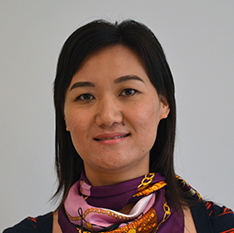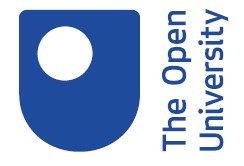Anglia Ruskin University’s Ying Xie and Helen Benton explore how new aviaition supply chains must not only deliver more energy efficient aircraft, it must also transform the whole aviation industry to a more sustainable model.
As members of OCAVIA (Oxford to Cambridge Arc Virtual Institute in Aviation), they are looking at the path towards sustainable aviation and how it requires total involvement of all stakeholders, working collectively by integrating green practices into their supply chain operations.
“The UK aviation industry has pledged to cut its net carbon emissions to zero by 2050. As the UK aviation industry is part of a global industry, achieving net carbon emissions will require an integrated approach at an international level, drawing expertise from all industry stakeholders including aerospace manufacturers, transportation providers, airlines, airports and air navigation service providers and the Civil Aviation Authority (CAA).
As part of the road map towards decarbonising the UK aviation industry, a number of initiatives are required in order to reduce net carbon emissions from 30 million tonnes per year to zero by 2050, while accommodating a 70% growth in passengers over the same period. Similarly, air freight is expected grow by more than 60% by 2040. The challenge is on and hence, these initiatives are wide-ranging to encompass the development of more energy efficient aircraft and sustainable aviation fuels alongside better air traffic management and operation procures, and effective market-based measures. With emissions generated at every stage of the global supply chain, the aviation industry must ensure these initiatives do not produce unintended carbon emissions elsewhere in the supply chain.
Sustainable aviation fuel production and the manufacture of hybrid electric or hydrogen powered aircraft will require massive transformation across the sector’s value chain. To achieve the target of zero net carbon emission in the aviation industry, a novel aviation supply chain from product design to end-of-life management is needed to extract the maximum value from resources and materials by incorporating state of the art digital systems.
The new aviation supply chain must not only deliver more energy efficient aircraft, it must also transform the whole aviation industry to a more sustainable model. The new supply chain needs to integrate new propulsion systems into aircraft, advanced materials and parts for enhancing aerodynamics, minimising aircraft weight and maximising aircraft strength, develop new logistics networks powered by clean energy, build dedicated infrastructure for storing and transporting clean fuels, and roll out new aircraft into service. The path towards sustainable aviation requires total involvement of all stakeholders in the new aviation supply chain, working collectively by integrating green practices into their operations.
Emerging technologies are transforming the product supply chain for aircraft design and production alongside disruptive technologies which are revolutionising the aviation service supply chain, improving security, and making transportation planning and management more effective and efficient. Digitalisation and decarbonisation of the aviation supply chain offer the potential to transform the UK’s aviation sector to offer zero-emission travel through a combination of novel technologies. Digital twins and blockchain can be game changers for aircraft design, maintenance and safety. A digital twin of an aircraft can provide us with a virtual model be used to track and monitor its flight path, the performance, reliability and safety of the components, the way it is piloted, and other factors to assess the impact on environment in real-time. Leveraging artificial intelligence (AI), predictive analytics and cloud computing, digital twins enable aerospace manufacturers to create an intelligent environment to model, monitor and manage real world objects or systems over the digital lifecycle. The digital lifecycle is created by simulating the conditions and environments that objects or systems will experience, using data captured from Internet of Things (IoT) sensors, business intelligence systems and other data sources; cloud computing infrastructure enables data storage and sharing for digital twins. The wealth of data captured by the aircraft digital twin combined with advanced data analytics will enable deeper exploration of how improvements can be made to the way the aircraft is used and its parts to identify innovations and improvements towards net zero. Furthermore, advanced data analytics through AI and machine learning can predict potential failures under different scenarios and determine the best solution to eliminate the possibility of each failure.
The next step is to create digital twins for multiple tiers of aerospace manufacturers who have mutual trust and who commit to share data. Digital twins for a clearly defined and bounded sub-supply chain could improve the visibility and trackability of production, transportation, warehousing and distribution processes. More advanced digital twins would be used to create a real time representation of the whole aviation supply chain, monitoring every stage along the chain in real time, connecting data throughout the entire chain, rapidly gaining insights into issues and taking more precise and rapid action to correct them. Ultimately using these technologies to make frequent minute-by-minute changes which would led to continual reduction in energy usage and other inefficiencies to reduce net carbon emissions.
The main obstacles to developing the digital twins concept further are data collection and data sharing; fears over data security; the vast number of IoT sensors required to be attached to devices, while supporting business applications need to be in place to track and deliver data in the right time, right place, and right format to support digital twins’ development. A lack of trust and inherent competition between businesses hinder data sharing through cloud computing systems, often resulting in a failure to retrieve sufficient supplier/customer information to inform business decision making, undermining a digital twin operation of the entire supply chain.
In addition to digital twins, blockchain would allow supply chain players to track the source and destination of every part on an aircraft, who handles it and when it is handled. Blockchain is also a vital advanced technology to capture and record authentic data across the complete product life cycle. The data recorded about a product over the digital lifecycle can be recorded as a transaction and stored in a specific block; the blocks are then verified and linked together to constitute a blockchain. Eligible supply chain players can have convenient access to the data by querying the digital twins’ database or sending requests to other players. Sharing the product lifecycle data through an encrypted peer-to-peer network could enhance data sharing and trust among supply chain players and ensure data security and privacy.
It is important to reiterate that the success of these technologies relies on real time data collection and advanced data analytics. The unprecedented volume and variety of valuable data generated in aviation related industries has the potential to unleash key information and knowledge, which will help businesses identify risks and opportunities and accelerate decision making for reducing net carbon and other efficiency improvements in aviation.
The Oxford-Cambridge Arc offers research, development and innovation with integration as its central theme. The research institutions now stand ready to work together via the Oxford-Cambridge Arc Virtual Institute (OCAVI) to support aviation industry stakeholders to incorporate a range of digital technologies to decarbonise operations and processes and to minimise risks and negative impacts on society.”
Dr Ying Xie is Head of the School of Economics, Finance and Law at Anglia Ruskin University.

Dr Helen Benton is the Director of the Centre for Innovation in Business Education at Anglia Ruskin University.










